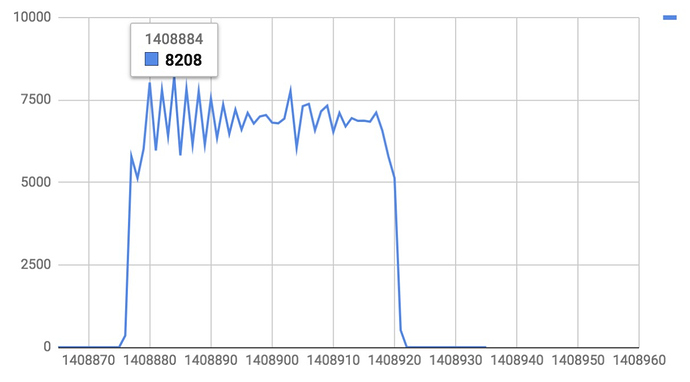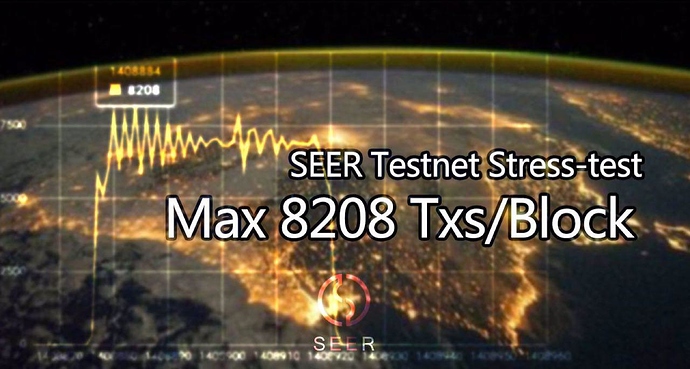At 3:34:48 pm on July 16, 2018, Singapore time, SEER’s software test engineers conducted a stress test on the SEER testnet to verify the high concurrent processing capacity of the SEER blockchain. Engineers continuously broadcasted 300,000 transactions in the testnet. All transactions were in 52 blocks from #1408876 to #1408921. All the transactions were successfully confirmed in 135 seconds, and none of them were missing. The highest concurrency peak appeared at the #1480884 block, with a total of 8,208 transactions.

Test Results:
Block Confirmation Time: 3 seconds
Highest Concurrency: 8208 txs/block 2736TPS
Average Concurrency: 5759.23 txs/block 1919.74TPS
The test results can be viewed through the SEER testnet block explorer:
http://Http://123.206.78.97/block/1408884 4
The current SEER main net has achieved an average confirmation time at 1.5 seconds, but there is no high concurrency demand at this moment. The highest concurrency occurs on the #1404223 block. A DAPP based on SEER has sent AirDrop to the users, with 854 transfers in 1.5 seconds.
In terms of the way how blocks are produced, SEER adopts a consensus mechanism of PoS, users use the smart contract to collateralize their SEER tokens to campaign for the top witnesses (block producer).
For the SEER network, the TPS efficiency of the blockchain mainly depends on the equipment and bandwidth used by the witnesses (the testnet uses the E5 4 core 8G memory processor with a frequency of 3.2GHz 100M bandwidth) The high concurrency demand depends on the ecological development of SEER’s DAPPs. When high-concurrency demand emerges, the 21 top witnesses will have sufficient fund and motivation to provide the most excellent operating environment for the underlying infrastructure of the blockchain, with even higher TPS.
In the SEER system, there are 21 top witnesses and 80 standby witnesses. The top 21 witnesses take turns to produce the blocks, measuring and obtaining the block rewards.
If the top witness node is abnormally offline, the standby witnesses will be selected by the ranking order to ensure the normal operation of the network. At the same time, the top 101 witnesses can also obtain significant collateral profit.
SEER’s Witness design ensures that the blockchain network will select the ecological participants who are best able to maintain the blockchain infrastructure.

